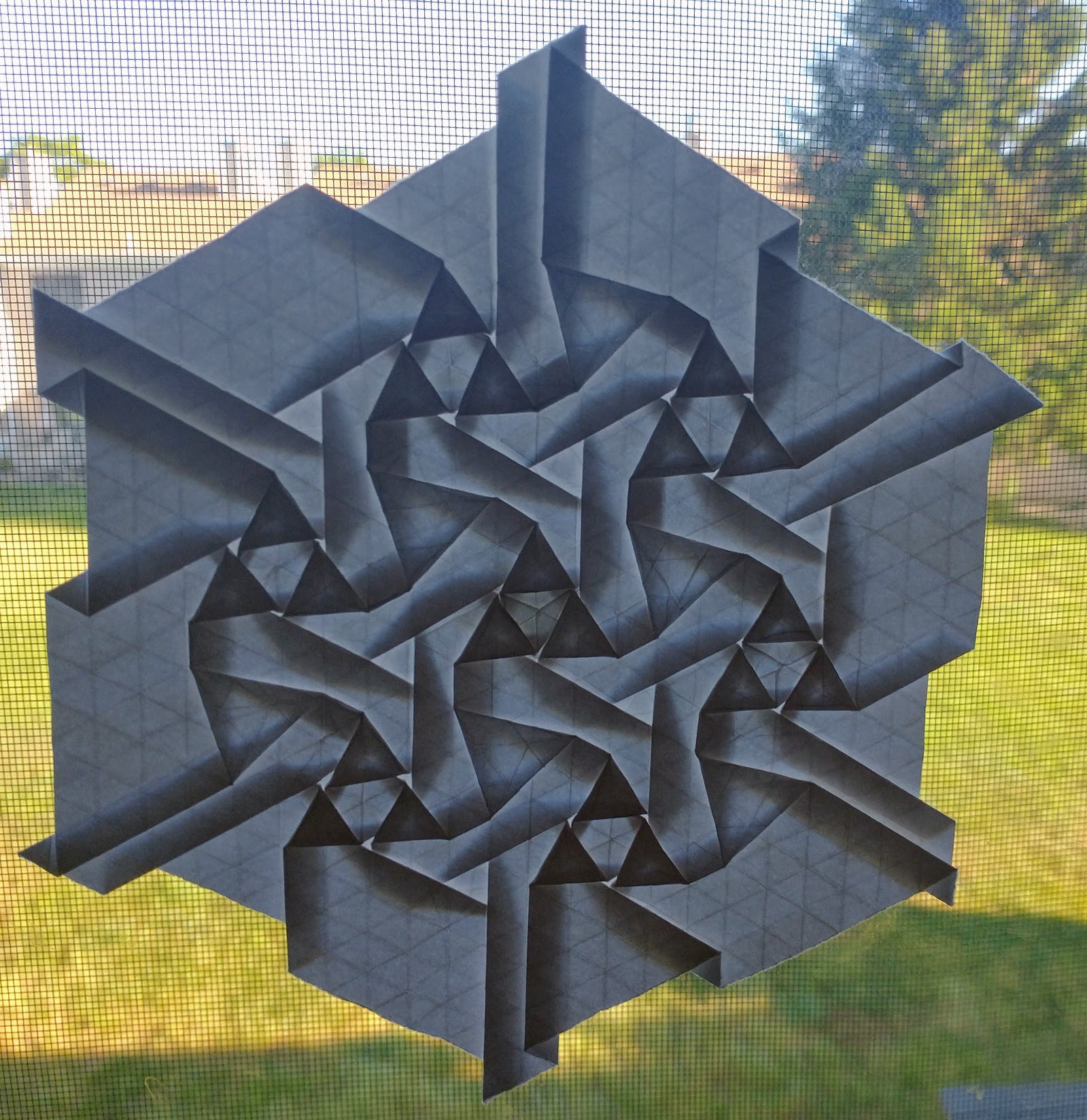Naturally Nesting Origami Tessellation
This is a natural hexagon tessellation. All the folds follow the triangle grid. I haven't come across a lot of tessellations of this nature. Or any really, other than my own. They are a little simpler to fold than some, but they are not easy or for beginners. The finished product is as interesting as any I've seen. The actual execution process is more about working with paper curling up on itself than coaxing unnatural configurations. I love all kinds of origami tessellations. They are all wonderful and interesting in their own right. But these natural tessellations are more than worth exploring.












